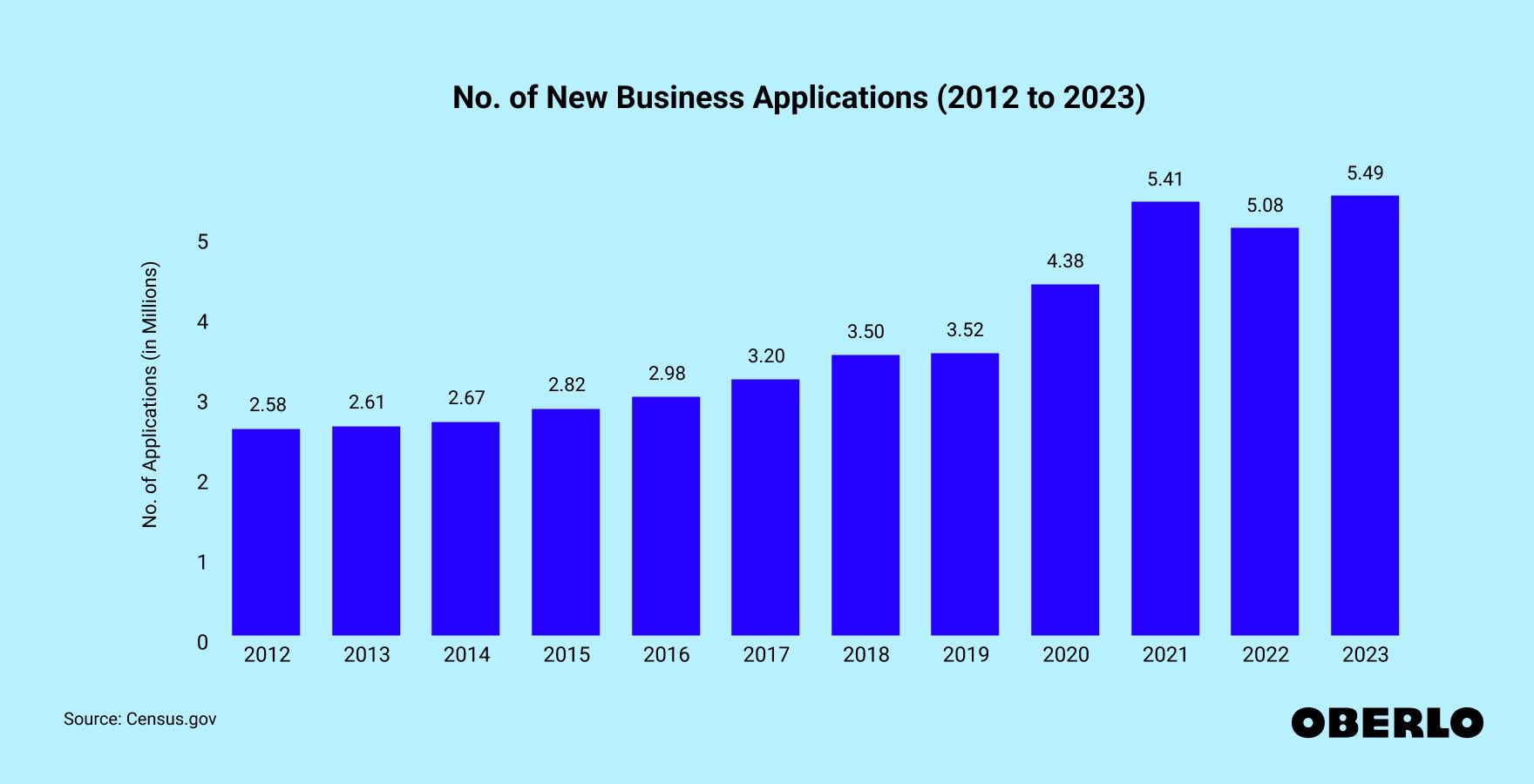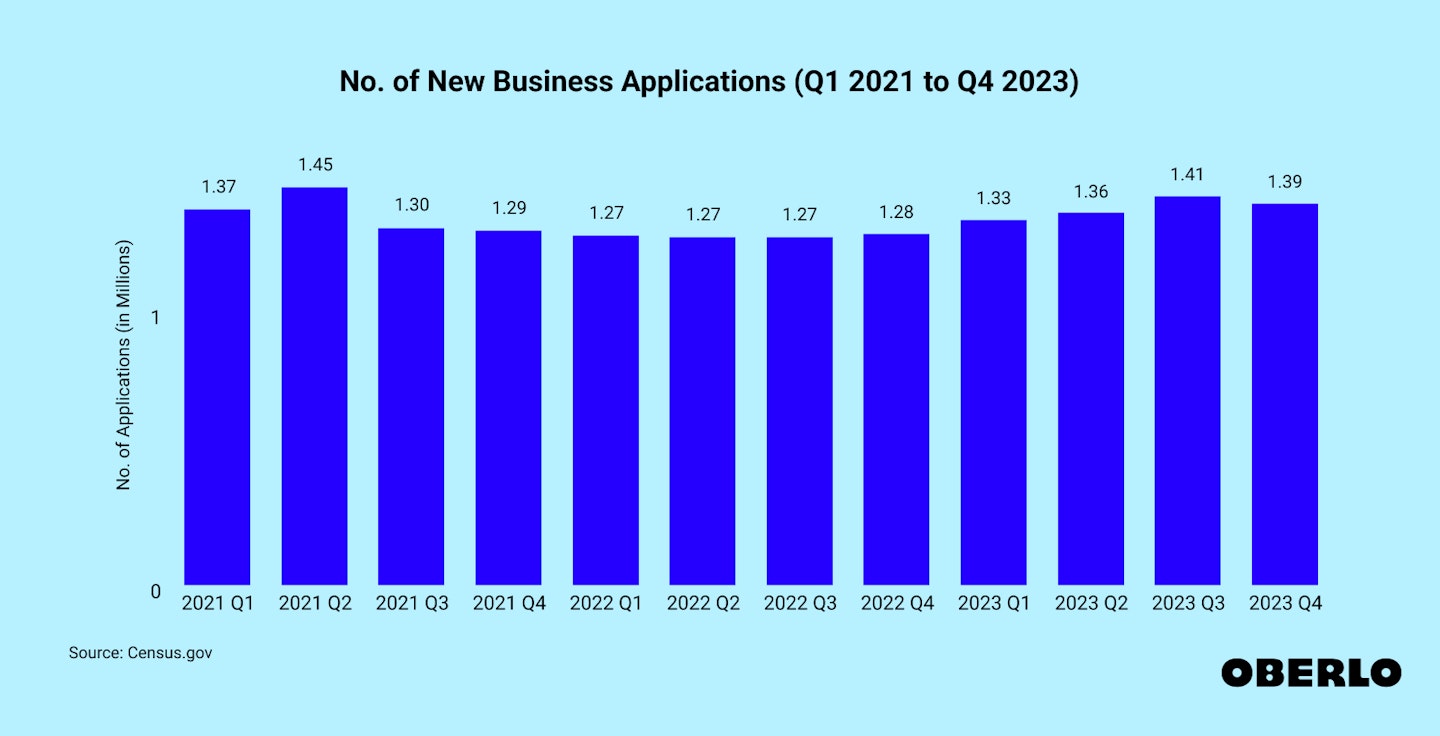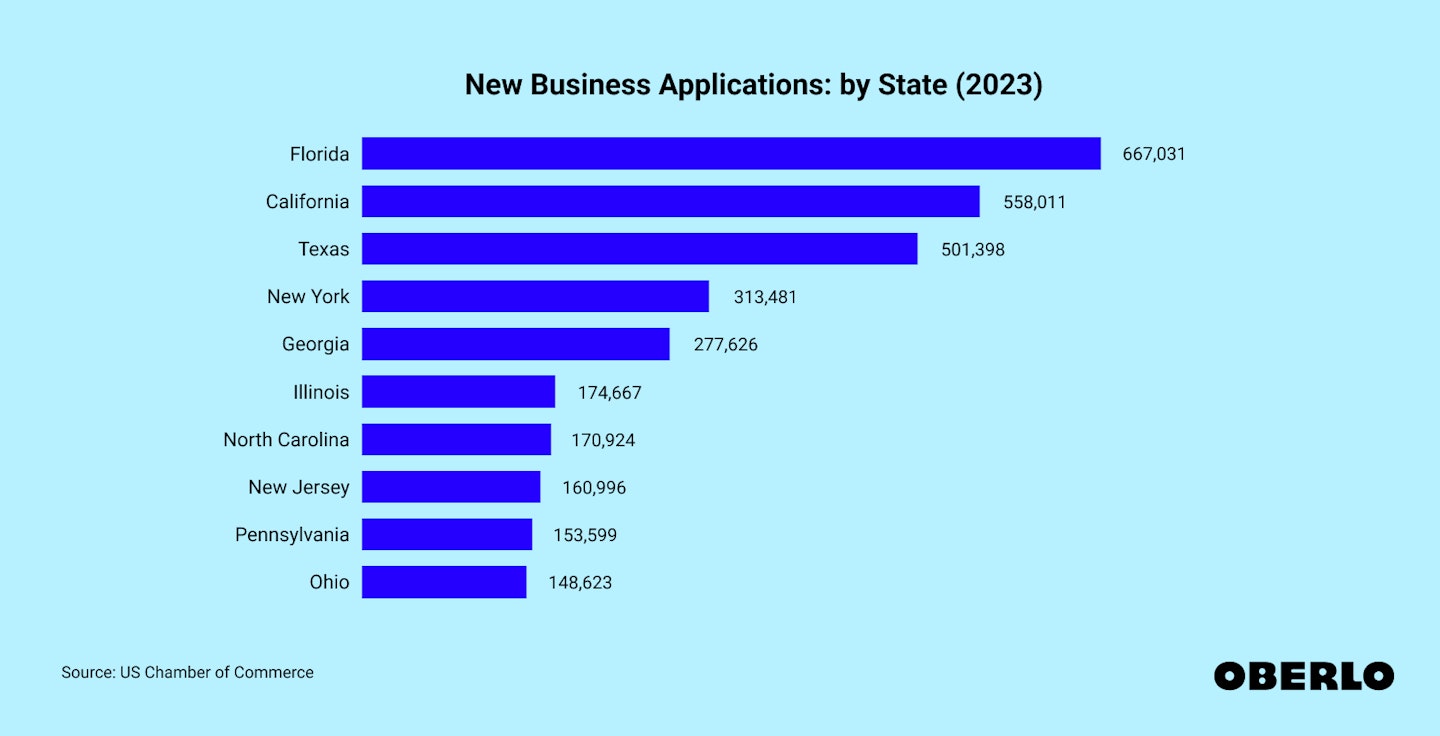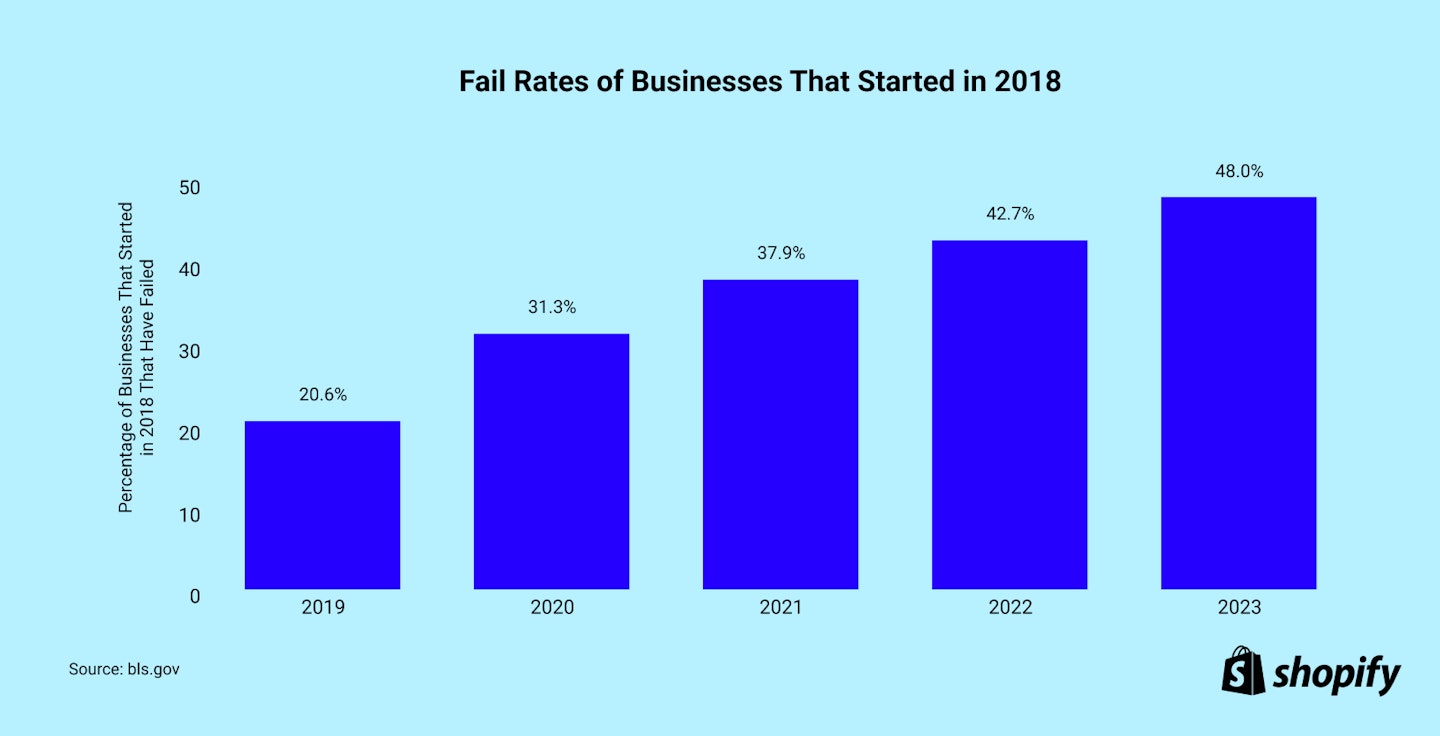
How Many New Businesses Start Each Year?
New business statistics indicate that more and more people in the United States have started their own businesses over the past decade.
This is no surprise, given the US’s relatively high rating of 91.6 out of 100 by the World Bank for ease of starting a business.
So then, how many new businesses start each year?



How many new businesses start each year? (2012–2023)
| Year | No. of new business applications |
|---|---|
| 2012 | 2.58 million (+0.1%) |
| 2013 | 2.61 million (+1.4%) |
| 2014 | 2.67 million (+2.1%) |
| 2015 | 2.82 million (+5.9%) |
| 2016 | 2.98 million (+5.4%) |
| 2017 | 3.2 million (+7.4%) |
| 2018 | 3.5 million (+9.5%) |
| 2019 | 3.52 million (+0.5%) |
| 2020 | 4.38 million (+24.5%) |
| 2021 | 5.41 million (+23.5%) |
| 2022 | 5.08 million (-6.0%) |
| 2023 | 5.49 million (+7.9%) |
According to the US Business Formation Statistics (BFS), the number of business applications filed in 2023 totaled 5.49 million (or 5,486,160, to be exact). This marks a 7.9% annual increase and the largest number of applications ever recorded in a calendar year.
Apart from a decline in 2022, new business application filings have generally been rising over the past decade. In 2012, the number of new business applications was 2.58 million. Fast forward five years to 2017, and this figure had increased by 24.1% to 3.2 million.
→ Click Here to Launch Your Online Business with Shopify
These new business statistics show that the largest growth over the past decade came in 2020, when the total number of applications grew by 24.5% to 4.38 million.
How many new businesses start year: quarterly breakdown (Q1 2021 to Q4 2023)

More recently, new business statistics from the first quarter of 2021 show a total of 1.37 million applications. This represents a 62.2% year-over-year increase and can be partly attributed to the COVID-19 pandemic.
Industry experts say the steep surge may be due to the delayed processing of a backlog of applications and the ecommerce boom, which spurred many to start online businesses.
Q2 2021 saw 1.45 million new business applications—a 5.8% rise from Q1 and a 59% increase year-over-year. This was also a high for the year, as new business applications fell to 1.3 million and 1.29 million for Q3 and Q4 of 2021. In 2021, a total of 5.41 million applications were filed, the highest in any given calendar year so far.
Analysts credit a part of the increase to a “need” from people after having lost their jobs during the pandemic; starting their own business was a way to potentially acquire lost income. Some also did so to meet rising and changing consumer demands.
The latest new business statistics from 2023 show that 1.42 million new business applications were filed in the fourth quarter. This marks an 8.5% annual increase from the same period in 2022.
New business applications ranked by state: top 10

Where are all these new business applications being submitted? According to the US Chamber of Commerce, the largest number of new business applications submitted in 2023 was in Florida.
| State | No. of new business applications (2023) |
| 1. Florida | 667,031 |
| 2. California | 558,011 |
| 3. Texas | 501,398 |
| 4. New York | 313,481 |
| 5. Georgia | 277,626 |
| 6. Illinois | 174,667 |
| 7. North Carolina | 170,924 |
| 8. New Jersey | 160,996 |
| 9. Pennsylvania | 153,599 |
| 10. Ohio | 148,623 |
Incidentally, the Sunshine State also ranks among the best states to start a business in 2024 and is home to the third-highest number of small businesses, after California and Texas.
New business statistics: fail rates

Despite the high number of new businesses registered each year, statistically, it’s likely that many of them will not last beyond five years. In fact, the fail rates of businesses published by the US Bureau of Labor Statistics show that more than one-fifth of new businesses shut in their first year.
Fail rates of businesses that started in 2018:
| After one year | 20.6% |
| After two years | 31.3% |
| After three years | 37.9% |
| After four years | 42.7% |
| After five years | 48% |